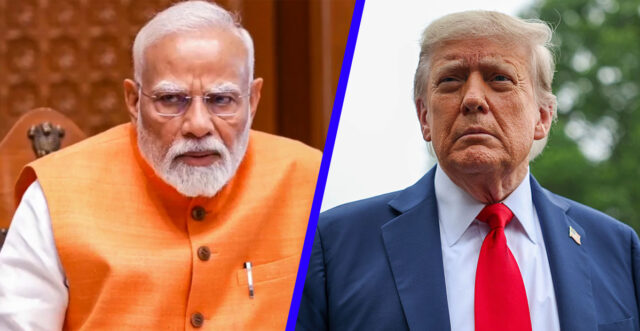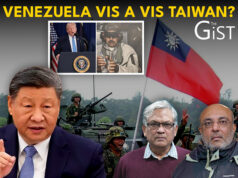The Shanghai Cooperation Organisation (SCO) Summit 2025 in Tianjin, China, marks a pivotal moment in global geopolitics. With Indian Prime Minister Narendra Modi, Chinese President Xi Jinping, Russian President Vladimir Putin, and leaders from Central Asia, West Asia, South Asia and Southeast Asia in attendance, the summit underscores the SCO’s growing influence as a platform for Eurasian cooperation.
For India, this event is particularly significant, as it marks PM Modi’s first visit to China in seven years, signalling a thaw in Sino-Indian relations strained since the deadly Galwan Valley clashes of 2020 that plunged India-China relations into a deep freeze. Recent developments, such as Chinese Foreign Minister Wang Yi’s visit to New Delhi and the two countries’ acceptance of incremental border de-escalation measures indicate a pragmatic approach to rebuilding ties.
However, the thaw is not entirely organic. It occurs against the backdrop of strained Indo-U.S. relations, particularly following the Trump administration’s decision to impose 50% tariffs on Indian exports. This move, described by India’s Foreign Minister S. Jaishankar as “unjustified,” reflects a selective geopolitical strategy by Washington, which has spared China and Europe from similar penalties. The U.S.’ apparent pivot toward Pakistan, especially after referring to India as a “dead economy,” has further eroded trust in the Indo-U.S. partnership, reminiscent of historical betrayals that shaped India’s foreign policy. Therefore, it is hard to deny that India’s strategic move eastward is not shaped by a shifting global order, accelerated by President Donald Trump’s drive to “Make America Great Again” by weaponising America’s financial and economic heft.
The current strain in Indo-U.S. relations evokes memories of the mid-20th century, when Washington briefly courted New Delhi before abruptly disengaging. In the late 1950s, post-Suez crisis, India and the U.S. collaborated to highlight China’s occupation of Tibet marking the beginning of a golden period in Indo-U.S. relations. To bolster India’s economic development and strategic position, the U.S. formed a consortium of Western nations to fund India’s Third Five-Year Plan (1961-66), aimed at industrial growth. This initiative, spearheaded by the Kennedy-Cooper Resolution passed by the U.S. Congress provided critical financial aid, including loans and technical assistance. On January 4,1961, the U.S. gave $50 million loan to India at 5.75% interest for the purchase of capital equipment from United States to meet the development goals envisaged in the Third Five Year Plan.
A cornerstone of this golden era was the burgeoning Indo-U.S. nuclear cooperation, spearheaded by the US Technical Cooperation Administration mission (US Technical Cooperation Administration mission (TCM was later renamed US Agency for International Development (USAID).
As has been reported, on July 11, 1959, this partnership was already well-established, involving the purchase of heavy water, the sharing of research and the training of Indian scientists in the US.
This report served as a prelude to a landmark announcement the very next day, July 12, 1959. The United States agreed to lease 15 tons of heavy water to India for its research reactor at Trombay, which was designed for peaceful atomic energy research. This agreement was historic; it marked the first time the American Atomic Energy Commission had leased—not sold—heavy water to a foreign government, signifying a new level of trust and cooperation that moved beyond mere commercial transactions.
However, this happy story was nearly spoiled by a diplomatic faux pas. The two governments had carefully coordinated to announce the deal simultaneously with a press release scheduled for July 13 at 9.00 am Washington time. In an awkward misstep, the United States Information Service (USIS) in New Delhi jumped the gun and released the news a day early. The breach of the agreement left the Indian Ministry of External Affairs (MEA) displeased, leading them to register a mild protest with their American counterparts.
During this period, the United States overlooked Jawaharlal Nehru’s launch of the Non-Aligned Movement (NAM) in 1961, alongside other non-communist nations, as India boldly confronted China. Defying Mao Zedong’s regime, India granted asylum to the Dalai Lama and thousands of Tibetans fleeing Chinese oppression, a move that heightened tensions and contributed to China’s invasion of India in 1962. However, the Indo-U.S. partnership soon faltered. The U.S., having leveraged the 1962 Sino-Indian War to widen the Sino-Soviet rift, appeared to have achieved its strategic objective. Consequently, Washington disengaged, effectively nudging India toward the Soviet Union. As U.S. priorities shifted to pursue closer ties with China, India found itself sidelined, no longer central to America’s geopolitical calculus.
Following President Kennedy’s assassination, the Johnson administration’s indifference toward New Delhi created a diplomatic chill. In 1966, new Prime Minister Indira Gandhi visited Washington and, under pressure, agreed to devalue India’s currency. The devaluation on June 6, 1966, was meant to unlock a World Bank loan, but the Bank withdrew its promise, leaving India in the lurch. The resulting financial crisis plunged the nation into political turmoil.
The U.S.’ support for Pakistan during the 1971 Bangladesh liberation war further signalled that India was no longer central to American geopolitical calculus. The current U.S. tilt toward Pakistan, coupled with tariffs and dismissive rhetoric, suggests a similar pattern.
Historical precedent shows that the United States, through its indifference in the 1960s, effectively pushed India toward a strategic partnership with the Soviet Union. Today, the modern Indo-U.S. “honeymoon,” which began at the turn of the century, appears to be nearing a similar end. Last time, the U.S. withdrawal coincided with its pivot to China. The critical question we must ask now is: what is the catalyst this time?
This raises critical questions: Why has the U.S. suddenly deprioritized India? Is it abandoning its “Pivot to Asia” policy, which aimed to counter China in the Indo-Pacific? Or is it shifting focus to Central Asia and Eurasia, potentially seeking a G2 arrangement with China to divide global spheres of influence?
India must recognise that engaging with the United States cannot be on equal terms. The established American empire is in decline, desperately clinging to its primacy, which makes it an unpredictable and self-interested partner. In contrast, China is still ascending and has not yet solidified its imperial dominance. This fluidity offers India a critical window of opportunity to shape a more balanced relationship with Beijing. India must act strategically to define these terms on a more equal footing before this window closes and the power disparity becomes permanent.
(Atul Bhardwaj is the author of ‘India-America Relations (1942-62): Rooted in the Liberal International Order’. Views expressed in this article are personal)
Atul Bhardwaj is the author of 'India-America Relations (1942-62): Rooted in the Liberal International order'





